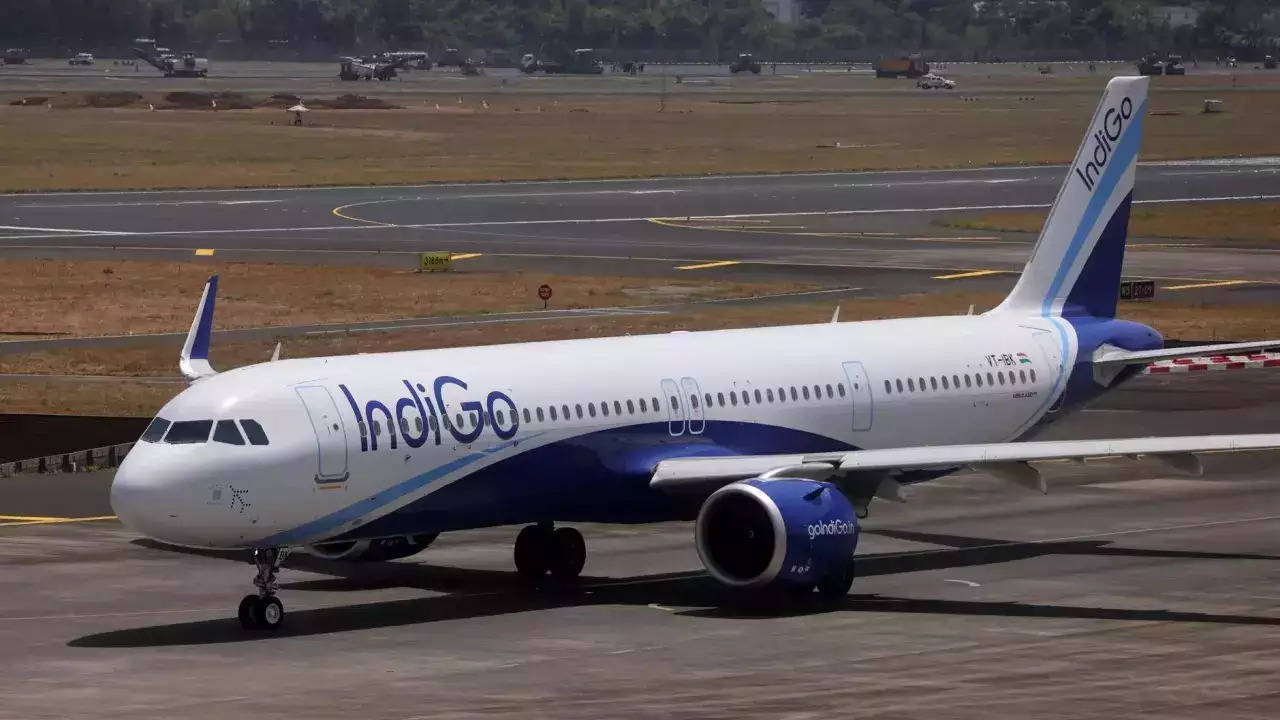
IndiGo's Q3 Profit Plunge: Rupee's Impact and Long-Haul Ambitions
IndiGo's Q3 Profit Takes a Nosedive: Is the Rupee to Blame?
The Indian aviation industry is buzzing with news of IndiGo's Q3 results, revealing an 18% plunge in profits. Despite a significant rise in total income and stable fuel prices, the airline's profit fell to a mere Rs 2,449 crore, down from Rs 2,998 crore in the same period last year. This unexpected downturn has sent ripples through the market, leaving investors and aviation enthusiasts wondering what's behind this dramatic fall. This article will delve into the specifics, analyzing the contributing factors to this drop and offering insights into IndiGo's future plans. Buckle up for a gripping journey into the heart of India's aviation landscape!
The Impact of a Weaker Rupee
The primary culprit behind IndiGo's dwindling profits is the weakening Indian rupee. A significant portion of an airline's expenses are dollar-denominated, including crucial costs such as aircraft lease rentals, engine maintenance, and the purchase of spare parts. When the rupee weakens against the dollar, these costs escalate substantially, directly impacting the airline's bottom line. This translates to higher expenses for IndiGo without a proportional increase in revenue, leading to reduced profit margins. The impact of fluctuating currency exchange rates serves as a potent reminder of the unpredictable economic forces affecting the airline industry.
Navigating the Currency Conundrum
IndiGo's struggle highlights the need for better risk management strategies within the aviation industry. Airlines must adapt to economic volatility and explore methods to hedge against such unforeseen financial shocks. Implementing effective currency hedging techniques could minimize the adverse effects of a fluctuating rupee, thereby improving the stability of their financial performance. Innovative strategies are necessary for airliners to thrive in such a fluctuating economic climate.
Growth Amidst Challenges: A Look at IndiGo's Revenue
While profit took a hit, IndiGo still managed to increase its total income by a robust 14.6% to Rs 22,993 crore. This showcases its resilience in a turbulent economic setting. However, increased income isn't enough to counteract the substantial rise in expenses associated with the dollar's strengthening against the rupee. This highlights that while increasing revenues are positive, airlines also must implement strategies to lower operational expenses.
Revenue Stream Diversification: A Strategy for Growth
Going forward, IndiGo should prioritize increasing diverse income streams. Exploration of supplementary revenue streams like premium seating upgrades, an enhanced loyalty program with rewards for frequent flyers, and partnerships with other brands for exclusive onboard offers can ensure greater financial resilience and boost their profitability. This diversification minimizes dependence on a single income source and helps stabilize against market volatility.
IndiGo's Bold Leap into Long-Haul Flights
In a surprising strategic move, IndiGo is preparing to venture into long-haul international flights. This expansion marks a significant step for the airline, indicating ambition and future growth plans. Their approach to long-haul routes involves wet-leasing Boeing 787 Dreamliners, a temporary solution until their new Airbus A350s arrive in 2027. Initial destinations will likely include London, Paris, and Amsterdam.
Challenges and Opportunities of International Expansion
While this expansion offers phenomenal opportunities for increased passenger numbers and new revenue streams, the airline faces numerous challenges. Competition in the long-haul market is fierce, requiring IndiGo to deliver competitive pricing, enhanced passenger experiences, and efficient operational strategies. These will be crucial to establish a competitive advantage. Effective management of logistical challenges associated with longer flights and different regulatory landscapes across international destinations is paramount to long-term success.
The Future of IndiGo: Balancing Growth and Stability
IndiGo's current predicament reveals a complex interplay of factors influencing profitability within the aviation industry. While revenue growth is promising, tackling the challenges associated with the fluctuating rupee and expanding into new markets requires shrewd strategic planning. This might require investments in hedging mechanisms, cost-control strategies, and an adept focus on improving operational efficiency. IndiGo must maintain financial balance amidst its growth trajectory and ensure its long-term resilience in a highly dynamic market.
Key Takeaways for the Future of IndiGo
- Effective management of currency fluctuations is critical for stabilizing profits.
- Strategic revenue diversification is crucial for enhancing resilience against economic volatility.
- Careful planning and efficient operations are crucial to success in the long-haul market.
- Continuous enhancement of operational efficiency, cost optimization strategies and customer service are crucial to stay competitive.
Take Away Points:
IndiGo's recent results underscore the unpredictable nature of the aviation industry. While revenue is growing, strategic initiatives such as effective hedging against currency risks, innovative cost-cutting measures, and the exploration of supplementary revenue streams are key to bolstering long-term profitability and sustainability. The expansion into long-haul flights presents significant opportunities but also significant challenges that need careful planning and resource allocation.








